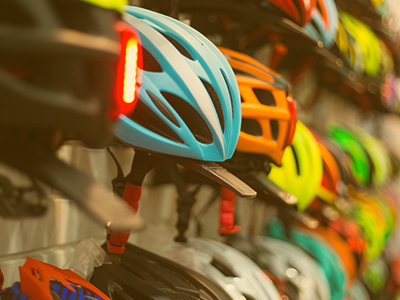Cycle Safety Tips

Here at cycleinsurance.co.uk we know how important it is to stay safe while out riding. There are increasing amounts of accidents involving cyclists each year, and there are some things you can do to help reduce the likelihood of an accident.
Some of these are common sense and you will probably already be aware of them, others might come as a surprise, such as the legal requirement of cycle lights at night.
Have a read through our safety tips below and you never know, you may pick you some useful tips!
This is a vital piece of equipment that can save your life in an accident. Although not required by law, a cycle helmet can significantly reduce your chance of head injury if you come off your bike by accident. Remember that helmets are designed to be a one use only piece of safety equipment, so if you do have a fall and hit your head, be sure to replace your helmet before you cycle again.
You should check that your helmet meets the British Standard (BS EN 1078:1997) and fits well. It should be securely fastened by straps, with only enough room for two fingers between your chin and the strap.
Bright and noticeable clothing is important when cycling as it helps other road users to see you both in daylight and poor light, and especially at night. Reflective clothing and/or accessories, like a belt or arm/ankle bands are essential in the dark.
If you are not wearing luminous of bright clothing, it can be very difficult for motorists to see you, and you could be involved in a serious accident.
When using your bicycle at night, or in weather where visibility is poor, it is a legal requirement to have the correct lights & reflectors fitted to your bicycle.
You should have:
- white front light
- red rear light
- red rear reflector
- amber/yellow pedal reflectors - front and back on each pedal
If you also have reflectors fitted to the front of the cycle and your wheel spokes, this will also help to improve your visibility.
Lights normally come with an option of steady or flashing, often with a choice of both settings. It is generally recommended to have a steady light at the front when you're cycling in the dark.
Check that any steady lights meet BS 6102-3. Flashing lights are not restricted to this standard but they must flash at a rate of one to four equal flashes per second and be at least four candelas in brightness.
Alongside the compulsory lights, you can have additional lights fitted to your cycle, but they should be the right colour - white at the front, red at the back.
A repair kit is a very handy item to keep with you when cycling. If your seat becomes loose, or you need to adjust your breaks, you can do so immediately without risk of injury or having to walk the rest of the way back home.
It is vitally important to be aware of traffic around you when cycling, especially so in town and city centres where motorists may have difficulty seeing you with all the distractions and potential hazards around.
You should always assume that a motorist has not seen you, and act accordingly.
You should regularly check your bicycle over for any damage, worn areas such as brake pads, and make sure that it is in full functioning order before you travel. Whilst ideally this should be done on a daily basis, we know that you will not always have the time to do this. If you use your bike daily though, try to make sure you perform a full check at least once a week.
Cycle Insurance can be very important on the road, if you do have an accident it can often support you with any third party property or personal injury claims as a result. If you crashed into the side of a brand new car, or hit a pedestrian, Cycle Insurance gives you some peace of mind, as well as protecting you if your bicycle is stolen or damaged.
We hope that you have found these tips helpful. Why not check out some of our other articles and guides as well? Such as our Bicycle Security Guide and The Benefits of Cycling.